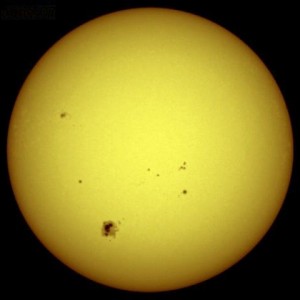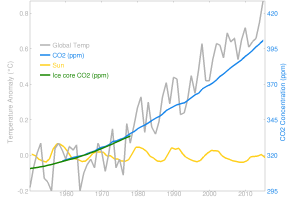| Winter 2016/2017 – Impact of Low Solar Activity
Almost all of the “major” winter outlooks, including the NOAA winter outlook, do not significantly factor in the current and anticipated low solar activity over the upcoming winter months. Actually, there is minimal research into direct relationships between solar activity and short- or medium-range weather.
However, a few outlooks do consider the solar minimum and suggest that the lack of solar activity could lead towards a colder-than-normal winter.
However, the main impact could be a moderation of already-warming temperatures. Think of it as a warm bathtub where you are gradually increasing cold water. There could be a lag between the onset of this period of low solar activity and noticeable impacts.
Or, there could be more significant and prolonged cooling like what has occurred in past history. |


